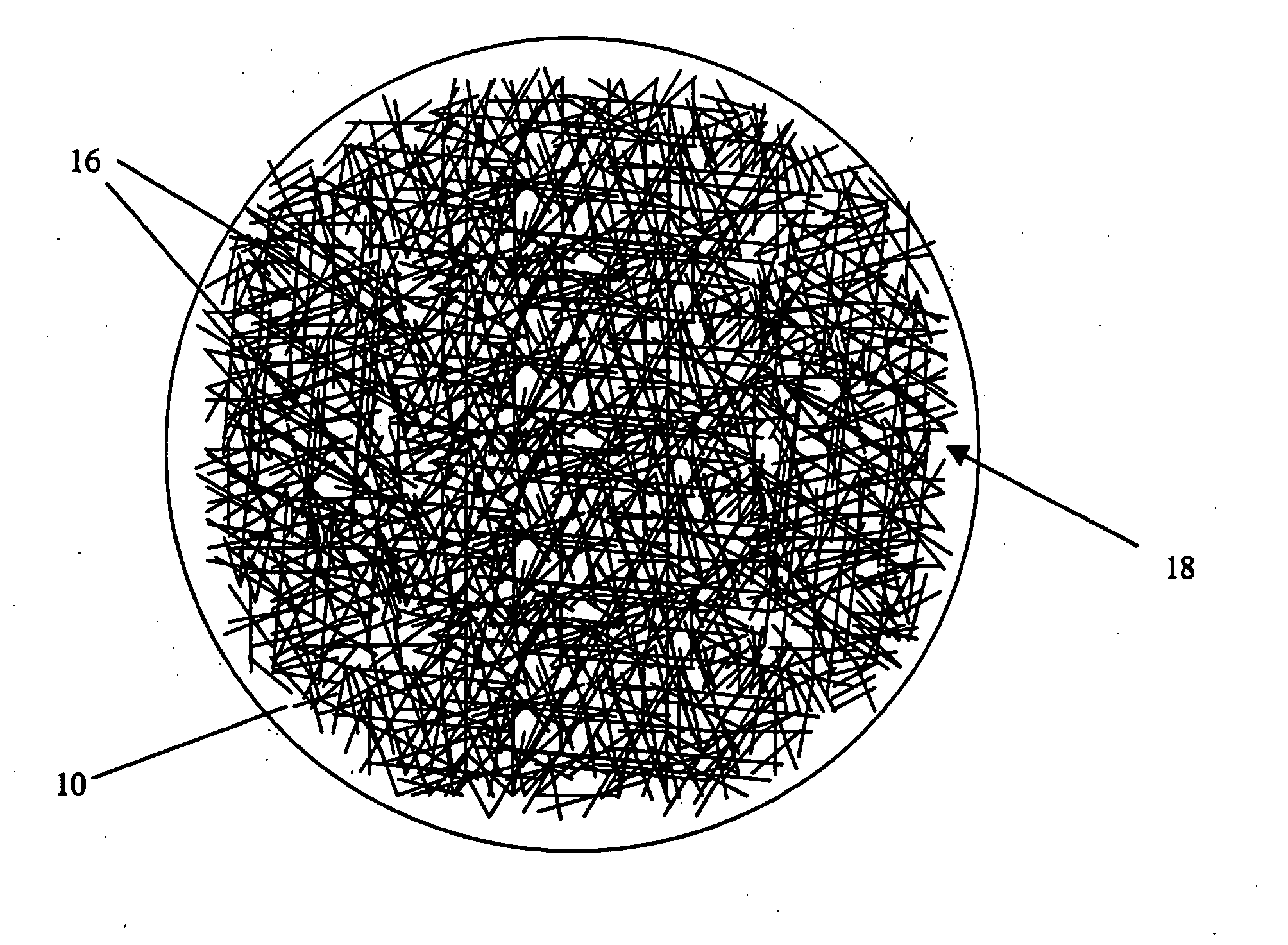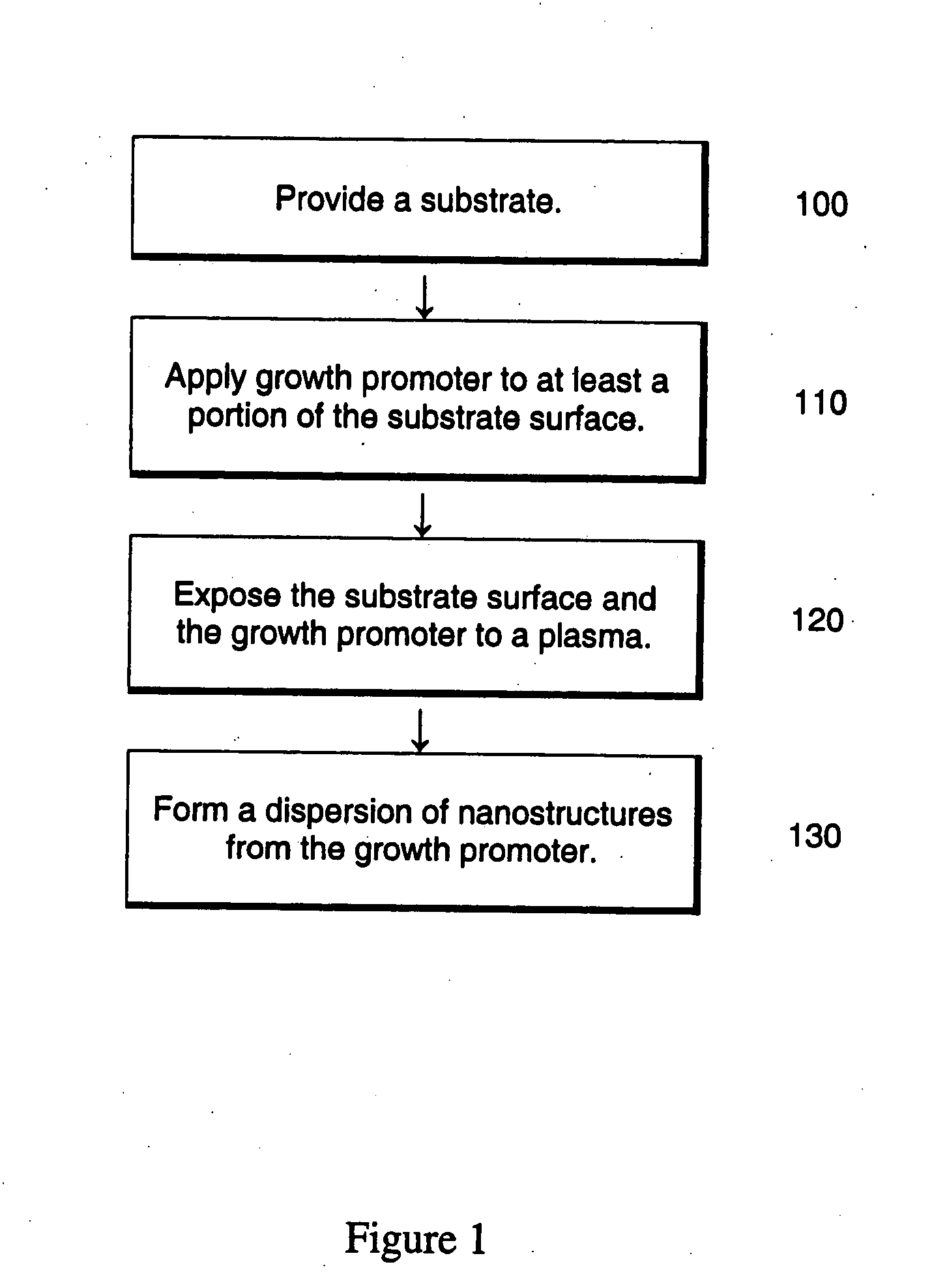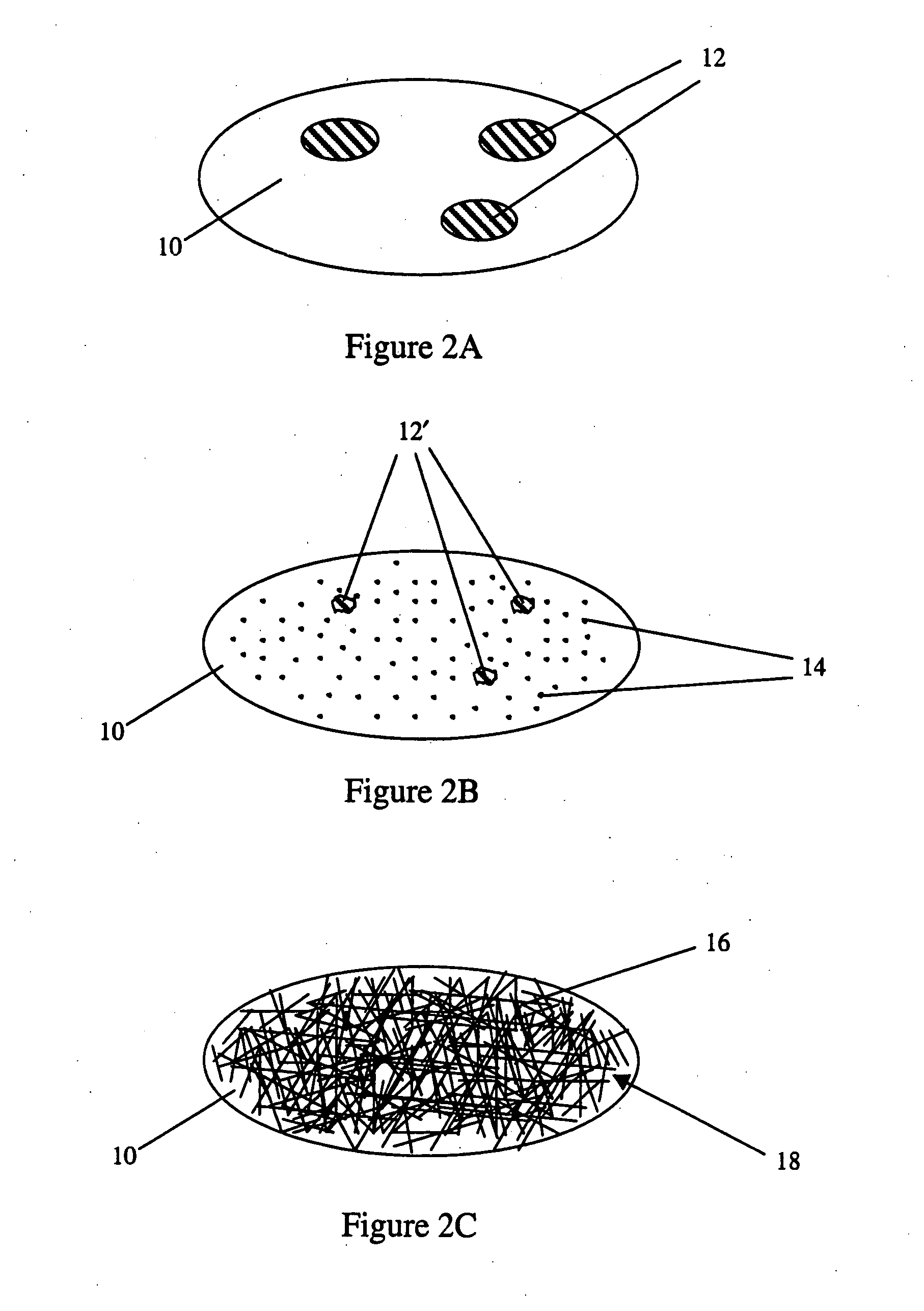Dispersed growth of nanotubes on a substrate
a technology of nanotubes and substrates, applied in the field of nanostructure dispersions, can solve the problems of poor contact deposition and adhesion, difficult to achieve the density of nanotubes needed to reliably make contact with the electrodes, and not a process that will be useful
- Summary
- Abstract
- Description
- Claims
- Application Information
AI Technical Summary
Benefits of technology
Problems solved by technology
Method used
Image
Examples
Embodiment Construction
[0029] In order to make full use of nanostructures in device technology, it will be necessary to find ways to manufacture the devices that are efficient and cost-effective. Much of the work that has gone into developing nanostructure devices has been at the laboratory level using methods that are not appropriate for large-scale manufacturing. If a high density, good quality, random dispersion of individual nanostructures can be formed on a semiconductor substrate, then a “statistical,” rather than a “localized” approach to nanostructure device fabrication can be used. In the “statistical” approach, electrical contacts can be placed anywhere on the dispersion of individual nanostructures to form devices. It is not necessary to make a specific correspondence between electrode position and nanostructure position as in the “localized” approach, because the high density dispersion of nanostructures ensures that any two or more electrodes placed thereon can form a complete electrical circ...
PUM
| Property | Measurement | Unit |
|---|---|---|
| size | aaaaa | aaaaa |
| size | aaaaa | aaaaa |
| size | aaaaa | aaaaa |
Abstract
Description
Claims
Application Information
 Login to View More
Login to View More - R&D
- Intellectual Property
- Life Sciences
- Materials
- Tech Scout
- Unparalleled Data Quality
- Higher Quality Content
- 60% Fewer Hallucinations
Browse by: Latest US Patents, China's latest patents, Technical Efficacy Thesaurus, Application Domain, Technology Topic, Popular Technical Reports.
© 2025 PatSnap. All rights reserved.Legal|Privacy policy|Modern Slavery Act Transparency Statement|Sitemap|About US| Contact US: help@patsnap.com



